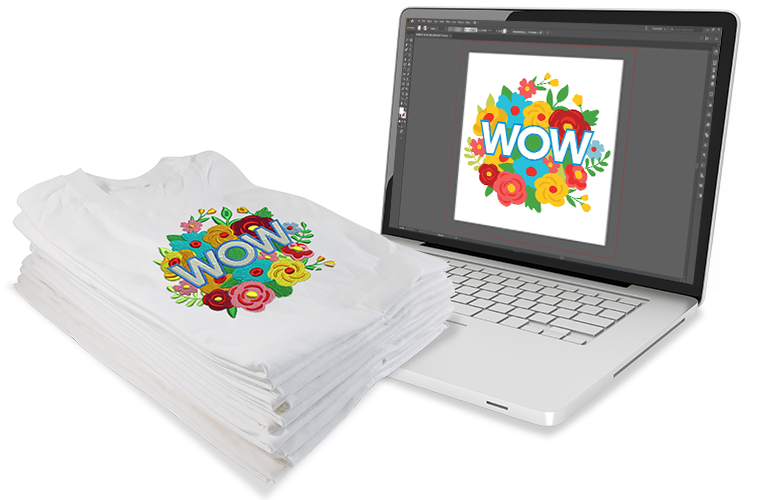Grasping the Needlework Digitizing Process: Your Ultimate Guide
Needlework digitizing is a meticulous craft that calls for accuracy and expertise to equate elaborate styles right into digital styles for machine embroidery. As craftsmens get started on this journey to master the embroidery digitizing procedure, a thorough understanding of the essentials sets the foundation for excellence.

Comprehending Needlework Digitizing Basics
Embroidery digitizing basics form the foundation upon which complex layouts are converted right into machine-readable formats for exact sewing. This initial action in the embroidery digitizing procedure is critical for making sure that the last stitched item is a devoted depiction of the initial layout. Understanding needlework digitizing essentials involves grasping vital principles such as stitch kinds, sew instructions, thickness, rug, and draw settlement.
Sew kinds play a crucial duty in figuring out the aesthetic and textural result of the stitched layout. By choosing the proper stitch kind, whether it be satin, fill, or running stitch, digitizers can accomplish the desired result and improve the overall top quality of the embroidery. Additionally, sew direction affects the flow and dimension of the layout, while density identifies the spacing and coverage of the stitches.
In addition, rug stitching gives security to the design by safeguarding the material and preventing distortion throughout the embroidery procedure. Pull compensation is an additional necessary factor to consider to counteract the all-natural tendency of fabric to agreement when stitched. Understanding these embroidery digitizing essentials is essential for creating professional-quality stitched products.
Selecting the Right Digitizing Software
Choosing the ideal digitizing software application is an important decision that dramatically affects the efficiency and high quality of the embroidery digitizing procedure. Digitizing for Embroidery. When choosing the appropriate digitizing software application, it is important to take into consideration aspects such as the complexity of layouts you plan to develop, the user-friendliness of the software program, the level of consumer support supplied, and the compatibility with your embroidery device
There are different digitizing software program options offered out there, varying from fundamental programs for newbies to innovative software for professional digitizers. Some popular choices include Wilcom EmbroideryStudio, Hatch Embroidery Software, and PulseID. These software provide a vast array of tools and features to aid you develop detailed layouts easily.
Before making check that a decision, it is recommended to explore the different software program alternatives with complimentary trials or demonstrations to identify which one best fits your requirements. Additionally, reading testimonials and looking for referrals from seasoned digitizers can provide beneficial understandings right into the staminas and weak points of each software (Digitizing for Embroidery). By carefully evaluating your requirements and contrasting the attributes of various digitizing software program, you can make an enlightened option that improves your needlework digitizing process
Digitizing Devices and Strategies

Optimizing Design Settings for Embroidery
Grasping the details of design settings is fundamental in attaining optimal outcomes in the needlework digitizing procedure, building upon the structure laid more information by recognizing digitizing tools and methods. When optimizing style setups for embroidery, it is vital to consider elements such as stitch kind, density, underlay, draw settlement, and registration. Registration setups align different aspects of the layout accurately, preserving total design integrity.

Troubleshooting Common Digitizing Issues
When experiencing common digitizing problems throughout the embroidery process, it is necessary to comprehend the source and implement efficient solutions immediately. One common trouble is stitch density problems, where stitches might be as well dense, triggering the fabric to tighten, or too thin, resulting in voids in the design. Readjusting the stitch density setups in the digitizing software application can help settle this problem.
An additional regular challenge is thread breaks throughout the embroidery procedure. This can occur due to different factors such as inaccurate stress settings, boring needles, or making use of low-quality string. Ensuring proper maintenance of the needlework equipment, including routine here are the findings needle adjustments and tension modifications, can decrease the occurrence of thread breaks.
Additionally, layout enrollment errors can lead to misaligned aspects within the needlework layout. Examining the design positioning in the digitizing software application and making essential adjustments before sewing can aid in avoiding this issue. By dealing with these typical digitizing concerns without delay and effectively, you can guarantee a smoother embroidery process and high-grade finished products.
Verdict
In conclusion, grasping the needlework digitizing procedure calls for a strong understanding of the essentials, the best option of software application, and expertise of devices and methods. Enhancing design settings and fixing common digitizing issues are essential steps in guaranteeing top quality embroidery outcomes. By adhering to these actions faithfully, one can accomplish precision and efficiency in the digitizing process.